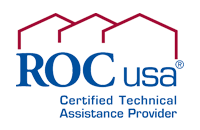
Five ways to align your impact with your business investment
By Community Loan Fund staff
The key to successful impact investing is achieving impact in alignment with a business’s goals and strategies.
Impact investing is gaining popularity as more people see it as a way to align the use of their capital with their values.
But when impact investing intersects with business investing, it’s important to ask: “What impact is being achieved, and what does it mean for my relationship with the business?”
Impact investing arrives on the heels of “community” and “socially responsible” investing. There’s danger in the possibility that impact investing may be co-opted by investors who want to capitalize on the movement’s popularity without adopting financing approaches that create the impact. When the work “impact” is disconnected from substance, its meaning is diluted and distorted.
 Alternatively, investors who are too impact-focused may, meaning well, apply conditions that unintentionally constrain the business, and even the social good they want to encourage.
Alternatively, investors who are too impact-focused may, meaning well, apply conditions that unintentionally constrain the business, and even the social good they want to encourage.
For example, someone may want to apply standardized job-quality metrics across all the businesses in which they’ve invested. That would require defining “quality job” across different industry sectors and stages of business growth. It’s like trying to define a good person—what characteristics always constitute goodness?
If the investor’s metric is unnecessarily restrictive, or focuses on something that doesn’t determine quality, it may not serve the business or the impact goals. The key is to discover how to achieve impact in alignment with a business’s goals and strategies.
Here are some ways investors can do that:
1. Screen out investments. This is how socially responsible investments have been defined since the 1970s. This is the easiest for investors to apply (think weapons and tobacco manufacturers), and often has been connected to divestiture campaigns (nuclear power, apartheid).If an investor believes an industry is bad for society, getting out early, or not getting in at all, are ways to avoid investing in products or practices they oppose. They might also avoid losses.
2. Screen in investments. This is a more-proactive strategy. It restricts the number of deals available to investors, and causes them to pass on more opportunities. What is the opportunity cost for this narrower focus? Perhaps little, if profitable returns can be harvested from businesses that advance the social goals.
3. Add covenants as part of the investment. Covenants make violation of certain business practices a condition of default, and are used when the investor wants to be more proscriptive in generating their desired impact.
Covenants can be valuable, but can also lead to unintended consequences when they constrain a business’s operations. For example, a strict “buy local” covenant may result in higher costs for a company’s materials, cutting too deeply into profits and destabilizing the business.
The key for investors is to find covenants that naturally align with the business’s values, and will remain aligned as the business and its strategies evolve. Otherwise, covenants can tie the business owners’ hands and can constrain their ability to adapt to market changes.
4. Covenant the process, not the outcome. Investors can leverage impact, and add flexibility for the business, by focusing on a process that accomplishes the social goal. For example, instead of requiring a business to source a percentage of its ingredients locally, the business could be required to solicit bids from local providers, and to share its rationale and thinking when a different provider is selected.
The downside is that this covenant may be labor intensive for the investor to monitor and interpret.
 5. Incentivize impact outcomes by offering the business owner a “carrot,” such as a rebate—like the good-driver discount insurance companies offer. This is more relevant for investments which generate enough financial returns for the investor to trade a portion for greater social impact.
5. Incentivize impact outcomes by offering the business owner a “carrot,” such as a rebate—like the good-driver discount insurance companies offer. This is more relevant for investments which generate enough financial returns for the investor to trade a portion for greater social impact.
It is particularly effective when the benefit can be offered annually, in concert with the business’s planning cycle. This approach encourages the business, while it is setting its annual strategies, to stretch for greater impact than it otherwise might have. It also brings the mission into the business owner’s or CEO’s DNA and encourages them to explore more deeply ways that the impact can align with their bottom line.
This approach requires a close working relationship between the investor and the business owner or CEO, and a willingness to customize the impact standards. The business proposes the strategy and finds agreement with the investor on the current baseline, the stretch goal, and the outcome that would earn the rebate. In the end, the investor decides whether the impact is achieved.
If you represent an organization or institution that seeks standardized metrics, this approach might not be for you.
***
Impact investing aims to generate real social impact alongside a financial return. The approaches above breathe life into the phrase, and can be mixed and matched to strike the right balance. The key is to understand how each approach aligns with generating a return.
There is no long-term impact without earnings. Impact investors will bail out if losses are higher than expected and/or if the companies they invest in don’t remain in business.
In our experience at the New Hampshire Community Loan Fund, the training and business education that come with the investment are a major factors in achieving the impact we want. Many individual investors may not feel interested in or qualified to deliver this additional support. If that’s the case, you might consider investing in or co-investing with, a local community development financial institution (CDFI).
The art of impact investing in businesses is to figure out ways to achieve impact that aligns with the business’s bottom line. Much impact, over the long term, can be accomplished when the partnership is a true win/win.
As the Community Loan Fund is itself an impact investor, we're interested in learning about your strategies and experiences. Please share them in a comment.















